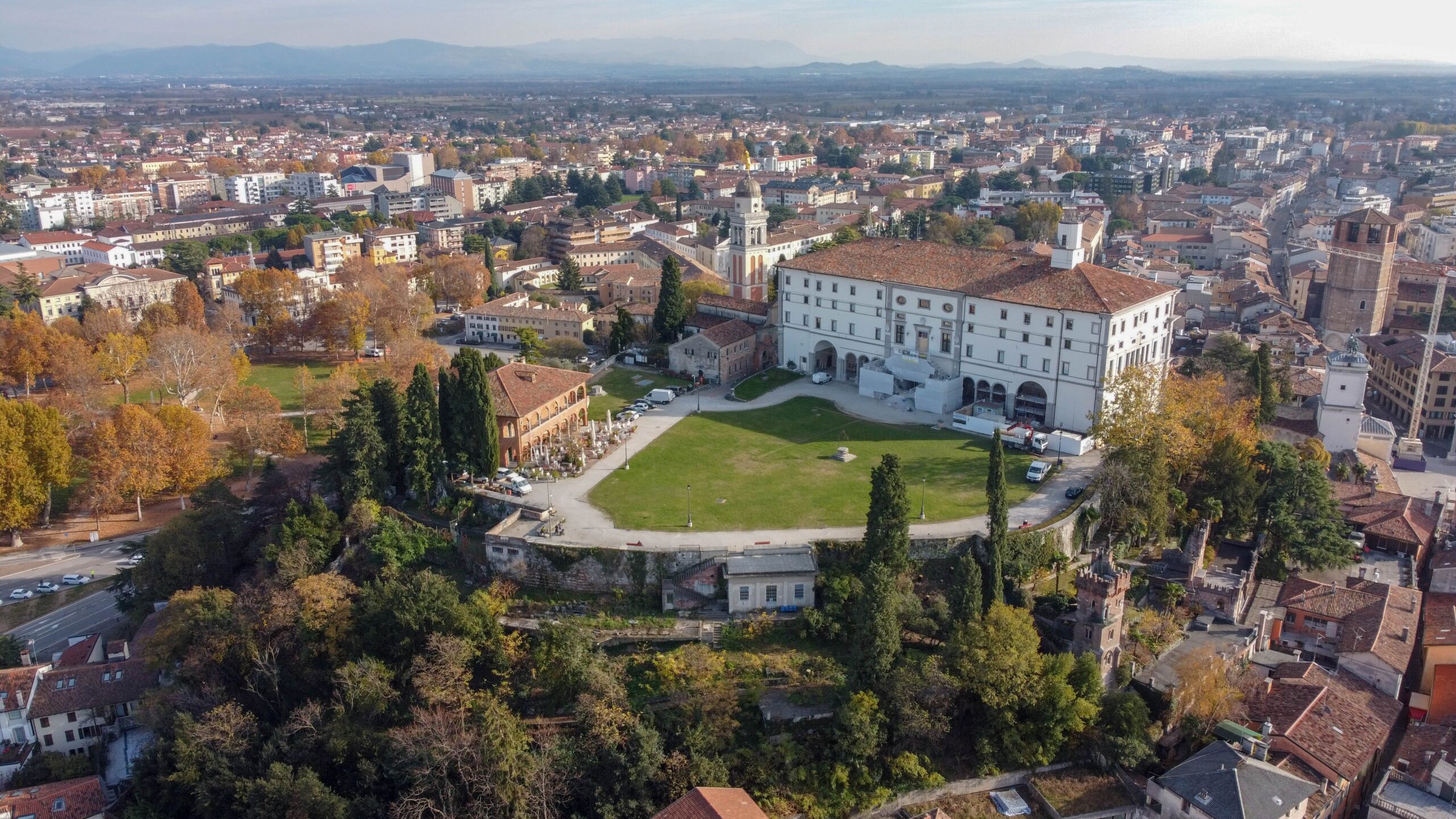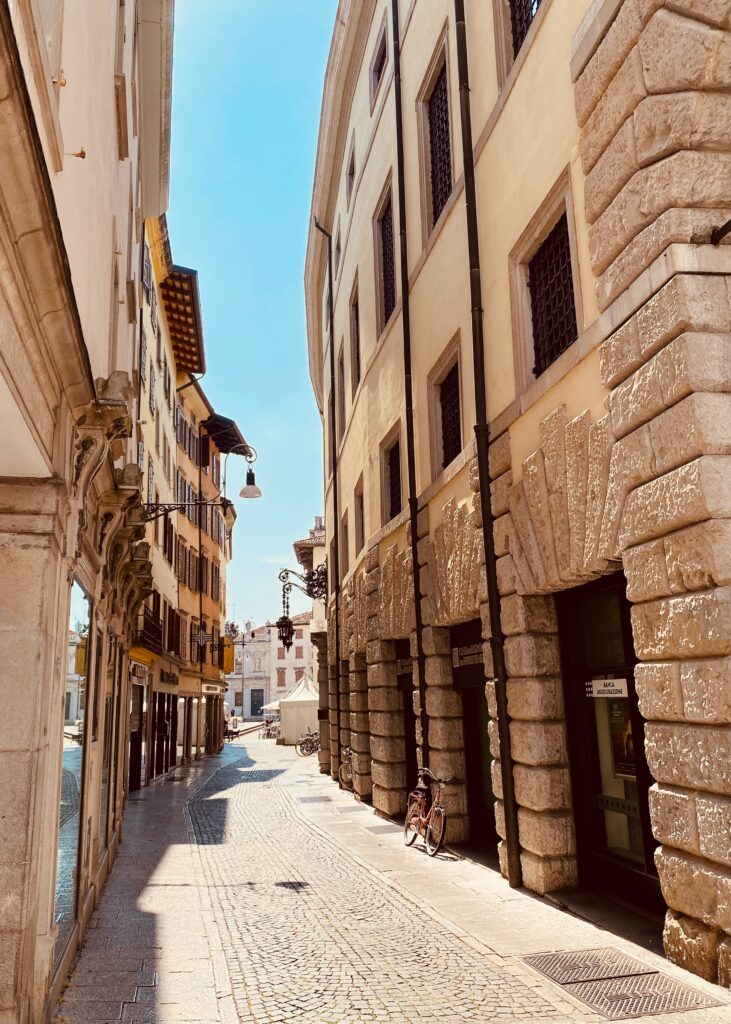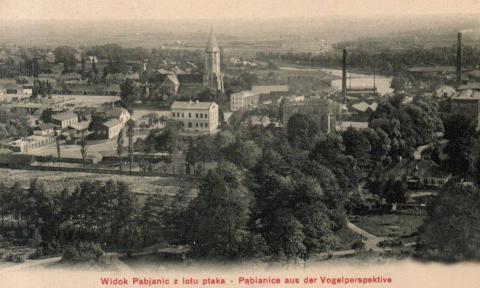HISTORY OF UDINE AND PABIANICE
Origin of the name
Udine
Pre-Roman toponym, G. Frau hypothesizes a formation from the root *oudh- / *Udh- „breast” → „Colle”, followed by a „not entirely clear” suffix. Attestations: Udene (983), Utinum (Latinization from UD-; Around 1000) other scholars derive the name from the cult for the Undine nymphs that were venerated in this place in pre-Roman and Roman times. Another possible etymology is the derivation from the Lombard *Wotan, or another name of the God Odin, Father of the gods in the Germanic religion. In fact, the Lombards, a population of Germanic origin, settled in this area around the 6th century. It is no coincidence that Cividale del Friuli was an important center of this population. However, this hypothesis is not proven by linguistics, in fact the theory that at the base of the toponym is the name óðinn (Odin) neglects the fact that the ancient Norse has never been talked about in Friuli, and that the Lombard name of Odin was Uuotan (Wotan).
Pabianice
One theory says that the name of the place comes from the turn of the 10th and 11th centuries, from the likely founder, named Fabian (Pabian), quite popular in neighboring Czech Republic. Over time, however, the real meaning of the name was forgotten and the local historian Maksymilian Baruch wrote at the end of the 19th century. On the basis of local legends, he concluded that the original name was Pobawanice or Ptrijanice from playing in the local forests of princes and hunting (beating) for wild animals. A completely different version was to take a name from an otherwise unknown duchess named Pabianka, who was supposed to be so ugly beauty that she had to be hidden from people. According to the local legend, to hide her ugliness from the bystanders, she was to go to the church of St. Matthew from the Castle several dozen meters away by the underground passage, leading to the current Zamkowa Street.

History of the cities
The first written and therefore certain testimony of the existence of Udine dates back to 983 with the diploma of Otto II of Saxony which assigns the Castle of Udine to the Patriarch Rodoaldo, later there are a dozen citations from the city or its castle in various documents dating back to a period between 1091 and 1223. The rise of Udine to Metropolis of Friuli takes place only from 1200 onwards thanks to the decisions taken by the Patriarchs of Aquileia which see the move of their headquarters in a more central position and Better defensible than the other previous offices of Aquileia, Cormons and Cividale. In 1238 he became the seat of the Patriarch of Aquileia, in that year in fact the Patriarch Bertoldo of Andechs moved from Cividale to Udine where the Patriarchal Palace was built. From that moment, Udine will take on more and more importance becoming the institutional capital of Friuli over time.
In the fourteenth century Udine became the most important city in the region for trade and trafficking at the expense of Aquileia and Cividale del Friuli. On June 7, 1420, following the war between Venice and the Patriarchate of Aquileia, the city was conquered by the Venetian troops, marking the fall and end of the temporal power of the patriarchs. Friulian noble family of reference on behalf of the Serenissima in the city that of the Savorgnan whose family coat of arms becomes, in fact, that of the city.

Pabianice was probably formed at the turn of the 10th and 11th centuries as a small mid-forest settlement over the Dobrzynka river, a tributary of the Ner river.
Initially, the village was the property of the prince. Only in the second half 12th century it became the estate of the Krakow church. Sources bind this event with the Czech princess Judyta – the first wife of Władysław Herman. The reason for the donation of the Pabianice settlement together with the area called „Chropy” (this name means in Polidh wetland, swampy areas), according to tradition, the desire to submit a votive offering in order to argue the birth of a descendant (prayers were heard and the princely couple could enjoy August 25, 1085 or 1086 from the birth of Bolesław III Krzywousty). Located at a long distance from Cracow, Pabianice experienced stagnation for the next centuries. As in his chronicle, Jan Długosz wrote in his chronicle: „more often (around – note) the animal wild for the lair was peeled than touched the farmer’s plow.”
The situation changed radically at the turn of the 13th and 14th centuries, when the headquarters of the Management Board of the Chapter Complex in the Sieradz land was located in Pabianice. Soon, efforts to place the city here. When it happened exactly – it is not known, because the location documents burned down in the 16th century. Although Władysław Łokietek issued the consent to establish the city in 1297 on the hands of Jan Muskata the bishop of Cracow, this goal was probably achieved in the mid-fourteenth century. Researchers most often accept the years 1342-1354, i.e. in parallel with the creation of the local parish. The first mention of the sources about Pabianice as a city comes from the end of the fourteenth century. However, it is known that Kazimierz the Great has already given the city of Pabianice two days market days – Tuesday and Friday, which has a positive impact on the economy of then townspeople.
